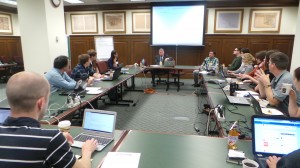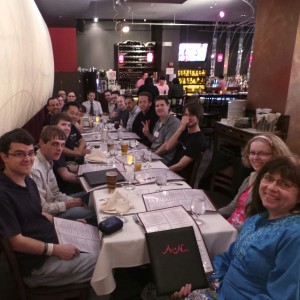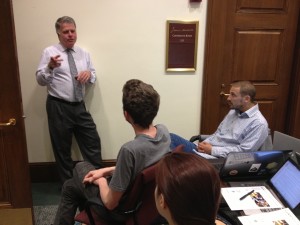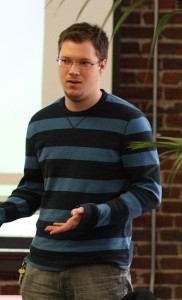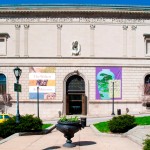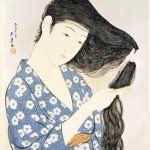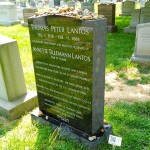We’re hiring!
Posted by James on April 26th, 2014
Pay attention, because Wikimedia DC doesn’t get to say this every day: we are hiring.
That’s right: Wikimedia DC is hiring for a five-month contract position to manage the Wikipedia Summer of Monuments program. Summer of Monuments is an outreach campaign modeled off of Wiki Loves Monuments, a photography contest successfully carried out in the United States in 2012 and 2013. The goal of Wiki Loves Monuments was to get pictures of historic sites, recognized on the National Register of Historic Places. Two years of contests resulted in 30,000 pictures uploaded, enhancing Wikipedia’s coverage of these historic places. We got the idea for Summer of Monuments after seeing that despite two years of these contests, the contest benefits some parts of the country more than others. That is to say, 30,000 uploads later, there are still states where fewer than 50% of the registered historic sites have pictures on Wikipedia.
Most of these states are in the South, including Arkansas, Oklahoma, Kansas, North Carolina, Mississippi, Missouri, Kentucky, Georgia, Tennessee, and Louisiana. To get the pictures of the sites we need, we will carry out a campaign that involves reaching out to county historical societies, individual photographers, and contributors on Wikipedia. The campaign will extend nationwide in September, comparable to the Wiki Loves Monuments contest held over the past two years. Your job will be to help develop and execute this campaign, supplementing the efforts of an enthusiastic online community.
Job description:
Wikimedia DC is looking for a project manager to run its Wikipedia Summer of Monuments campaign in 2014. This will be a paid contract position that will begin in May and end in mid-October. This position is based in Washington, DC, but some travel (with expenses paid) will be required as part of the job.
Duties:
- Outreach to county historical societies and individual volunteers to contribute photographers
- Coordination with WikiProject NRHP
Requirements:
- 1–2 years project management or field organizing experience
- Excellent interpersonal and collaboration skills, a demonstrated aptitude for building professional relationships, including through online communications
- Strong organizing skills, capable of operating with little direct supervision
- Must provide own laptop computer
Preferred, but not required:
- Strong preference for candidates with experience on Wikimedia projects, including Wikipedia
- Regardless of Wikimedia experience, an ability to categorize photographs according to a set of standard criteria
- Photography experience, owning a professional-grade camera
- A strong sense of logistics and the ability to interpret visual data (namely maps) would be helpful
- Demonstrated interest in history and historic places
- Existing relationships with historical societies, particularly in the Southern United States
To apply:
To apply for the position, please e-mail a cover letter and résumé to James Hare at james.hare@wikimediadc.org. We will contact you if we are interested in further consideration of your application. No phone calls, please.
More information:
- About Wikimedia DC
- Wikimedia Foundation grant proposal funding the program, including the job position
- Wikipedia article on Wiki Loves Monuments
- Progress report maintained by WikiProject NRHP
- Press release announcing the results of Wiki Loves Monuments 2013.
Pay attention, because Wikimedia DC doesn’t get to say this every day: we are hiring.
That’s right: Wikimedia DC is hiring for a five-month contract position to manage the Wikipedia Summer of Monuments program. Summer of Monuments is an outreach campaign modeled off of Wiki Loves Monuments, a photography contest successfully carried out in the United States in 2012 and 2013. The goal of Wiki Loves Monuments was to get pictures of historic sites, recognized on the National Register of Historic Places. Two years of contests resulted in 30,000 pictures uploaded, enhancing Wikipedia’s coverage of these historic places. We got the idea for Summer of Monuments after seeing that despite two years of these contests, the contest benefits some parts of the country more than others. That is to say, 30,000 uploads later, there are still states where fewer than 50% of the registered historic sites have pictures on Wikipedia.
Most of these states are in the South, including Arkansas, Oklahoma, Kansas, North Carolina, Mississippi, Missouri, Kentucky, Georgia, Tennessee, and Louisiana. To get the pictures of the sites we need, we will carry out a campaign that involves reaching out to county historical societies, individual photographers, and contributors on Wikipedia. The campaign will extend nationwide in September, comparable to the Wiki Loves Monuments contest held over the past two years. Your job will be to help develop and execute this campaign, supplementing the efforts of an enthusiastic online community.
Job description:
Wikimedia DC is looking for a project manager to run its Wikipedia Summer of Monuments campaign in 2014. This will be a paid contract position that will begin in May and end in mid-October. This position is based in Washington, DC, but some travel (with expenses paid) will be required as part of the job.
Duties:
- Outreach to county historical societies and individual volunteers to contribute photographers
- Coordination with WikiProject NRHP
Requirements:
- 1–2 years project management or field organizing experience
- Excellent interpersonal and collaboration skills, a demonstrated aptitude for building professional relationships, including through online communications
- Strong organizing skills, capable of operating with little direct supervision
- Must provide own laptop computer
Preferred, but not required:
- Strong preference for candidates with experience on Wikimedia projects, including Wikipedia
- Regardless of Wikimedia experience, an ability to categorize photographs according to a set of standard criteria
- Photography experience, owning a professional-grade camera
- A strong sense of logistics and the ability to interpret visual data (namely maps) would be helpful
- Demonstrated interest in history and historic places
- Existing relationships with historical societies, particularly in the Southern United States
To apply:
To apply for the position, please e-mail a cover letter and résumé to James Hare at james.hare@wikimediadc.org. We will contact you if we are interested in further consideration of your application. No phone calls, please.
More information:
- About Wikimedia DC
- Wikimedia Foundation grant proposal funding the program, including the job position
- Wikipedia article on Wiki Loves Monuments
- Progress report maintained by WikiProject NRHP
- Press release announcing the results of Wiki Loves Monuments 2013.


